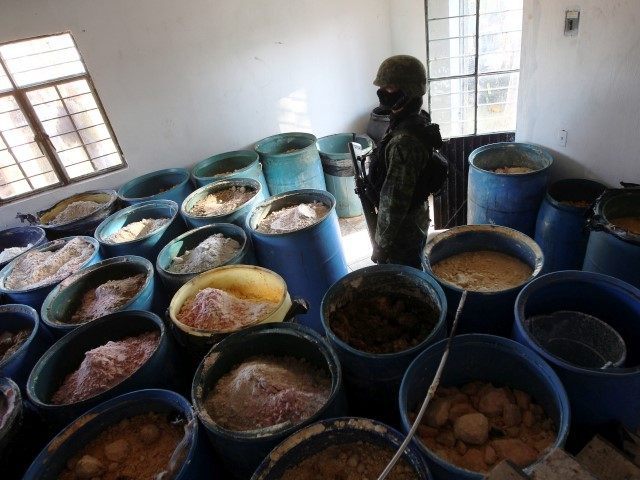The synthetic drug known as methamphetamine (meth) as steadily increased in the U.S., although domestic production has dropped significantly since one of the key ingredients became highly restricted in 2004. As a result, Mexican meth traffickers have seized upon the market opening and are flooding the U.S. Midwest with Mexican meth.
The drug is highly addictive and very dangerous, largely due to the fact it’s a crystalline cocktail made with extracts from things like brake cleaner, fertilizer, and battery acid.
There is more than one method for making methamphetamine, but the most popular way involves the use of pseudoephedrine, a chemical found in cold medicines. Meth makers, or “cookers,” mix it with liquids like lighter fluid or drain cleaner to make a less-pure homemade version known as crank. As a result of the spike in meth lab discoveries by the Drug Enforcement Administration in 2004, pseudoephedrine-containing medicines became highly restricted at drug stores.
According to a Fox News Latino report, meth lab seizures have dropped dramatically—particularly in the Midwest—in the last decade as a result. Missouri is on pace for 40 percent fewer meth lab seizures this year than last, Oklahoma busts are on pace to drop 33 percent, and Tennessee’s are down 48 percent.
However, U.S. law enforcement data indicates there has been no such drop in demand for methamphetamine. Mexican drug producers and traffickers have taken advantage of this opening in the American drug market, and for several years have been either smuggling the finished product across the border or are making it themselves in their own US-based meth labs. “It’s critical to note that no state is saying meth use is down,” said Mark Woodward of the Oklahoma Bureau of Narcotics to Fox News Latino. “It’s just that they’ve switched sources from cooking it to importing it.”
While pseudoephedrine is also difficult to come by in Mexico, producers south of the border have resorted to an alternate method of “cooking” meth called P2P. It uses an organic compound called phenylacetone, which according to the DEA is banned in the U.S. but obtainable in Mexico. As a result, the purity of Mexican meth has skyrocketed since 2007 while simultaneously becoming 66 percent cheaper. Tennessee, Oklahoma, and Missouri are feeling the effects of the Mexican meth influx most strongly. However, the deadly drug can be found in cities and communities all across the country.
Sylvia Longmire is a border security expert and Contributing Editor for Breitbart Texas. You can read more about cross-border issues in her latest book, Border Insecurity: Why Big Money, Fences, and Drones Aren’t Making Us Safer.

COMMENTS
Please let us know if you're having issues with commenting.